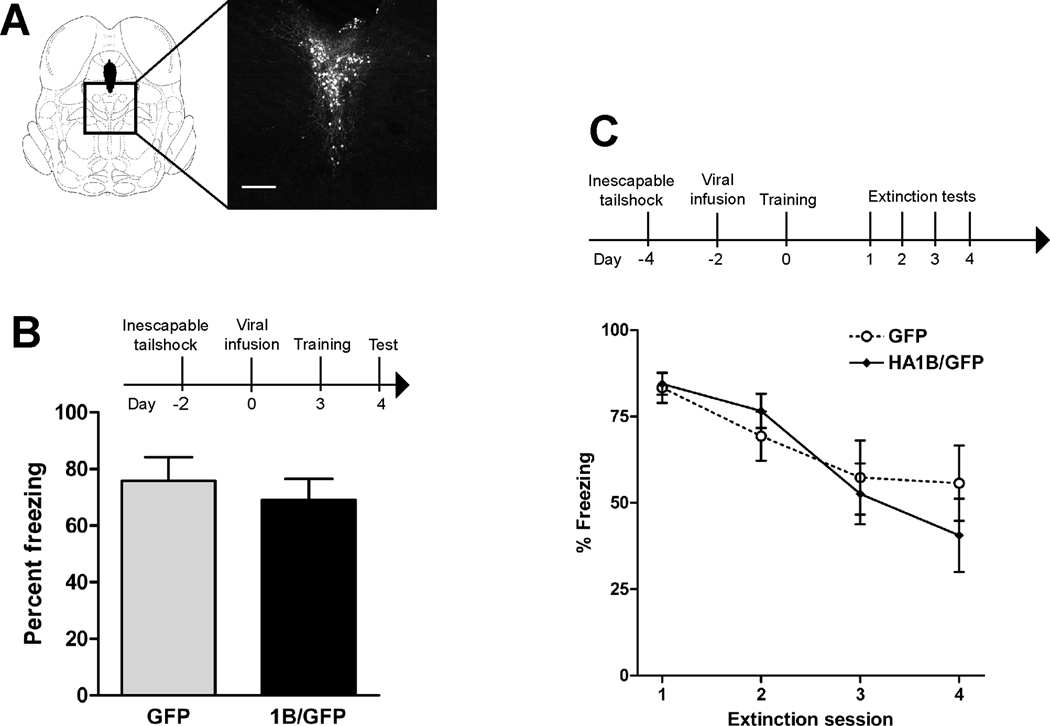Figure 1.
Overexpression of 5-HT1B receptors in the caudal DRN does not reduce conditioned fear in rats with a history of inescapable tailshock stress. In contrast, unstressed rats receiving 5-HT1B overexpression demonstrate reduced expression of conditioned fear (McDevitt et al., 2011). Surgeries and behavioral testing were carried out as previously described (McDevitt et al., 2011). A, demonstration of viral-mediated gene transfer in the caudal DRN. Left, depiction of tissue targeted in stereotaxic surgery (reprinted from (Paxinos and Watson, 1986), with permission from Elsevier, copyright 1997). Right, viral-mediated expression of GFP seen in a 40 µl slice of tissue. Scale bar = 400 µm. B, Rats were exposed to inescapable tailshock, infused with GFP (n=9) or 1B/GFP (n=11) viral vector, and underwent contextual fear conditioning. Graph depicts mean (+SEM) percent of observations spent freezing during a test session. C, to ensure that negative results in the above experiment were not due to a “ceiling” of percent freezing, an extinction experiment was performed in a separate cohort of animals. Rats were exposed to inescapable tailshock, infused with GFP (n=8) or 1B/GFP (n=8) viral vector, trained in contextual fear conditioning, and then tested on four consecutive days. Data points depict mean (± SEM) percent of observations spent freezing during test sessions.

